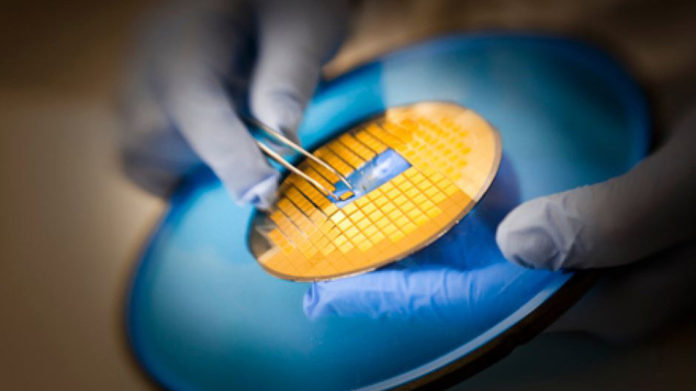Nanopatch is the vaccine delivery system for people who fear needles

An Australian company is developing a piece of nanotechnology, which could see the end of the painful vaccination jab.
The next-generation vaccine delivery system, created by Vaxxas, is called the Nanopatch and is the size of an adult thumbnail. It uses thousands of vaccine-coated pins that perforate into the skin.
“The Nanopatch is simply a much, much better way to deliver vaccine. It has the potential to be more efficient and more effective immunologically, while also being better for vaccine producers, better for health-workers, and better for patients,” Vaxxas CEO David Hoey told Mashable.

Image: Vaxxas
The company, formed in 2011, is working with the World Health Organisation (WHO) to conduct the first human studies of the vaccination technology in 2015/16. The company will need to undertake multiple stages of clinical trials before the product will be on the market, and this could take a couple of years.
The Nanpopatch is scientifically designed to get the most out of vaccines. Using a small applicator, only the top layer of skin is penetrated by the needle-free patch, which will remove the pain we associate with vaccination needles. “We expect the application to feel like a soft ‘flick’ against the skin, with the Nanopatch removed a minute or two later,” Hoey said. “That’s very different from the sharp pain of a needle injection.”

Vaxxas Nanopatch.
Image: Vaxxas
The thousands of tiny vaccine-coated projections then deposit vaccine just under the outer layer of the skin where abundant populations of special immune cells are waiting to help the body respond to potential infections. “Precisely positioning vaccine amongst these immune cells is a very efficient and effective way to induce strong immune response,” Hoey added.
In September, Vaxxas received funding from WHO for pre-clinical studies using the polio vaccine.
“Once this work is successfully completed, we plan to work with WHO on formal clinical studies that would need to be completed before a ‘Polio Nanopatch’ could be used in vaccination programs,” Hoey said.

Image: Vaxxas
The beauty of the Nanopatch, and the reason WHO is backing the research, is due to the potential it has to fundamentally improve the effectiveness and safety of vaccination programs in developing countries — especially in continents affected by the current polio outbreak such Asia, Africa and the Middle East. The Nanopatch will remove the challenges often faced with liquid, needle-based vaccines in these often not technically-advances areas.
Hoey outlined the key challenge in these regions is maintaining conventional vaccines in refrigerated conditions to retain their effectiveness until they can be injected into patients. It can be next to impossible due to the cost of providing refrigeration for transportation and storage in areas without power.
“Vaccine coated onto the Nanopatch is in a dry form that can be stable and active at room temperature for months. And because the Nanopatch has no ‘sharps,’ risk of needle-stick injury and cross-contamination to health-workers could be much lower,” he said.
Have something to add to this story? Share it in the comments.
